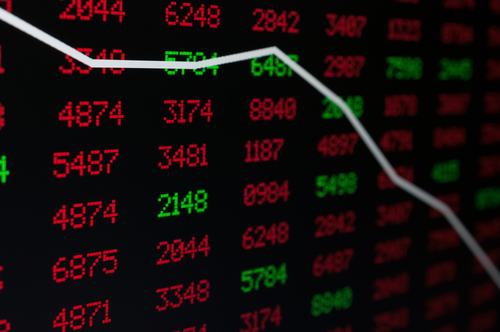The Royal Mint saw a 7% increase in its precious metals business in 2023, outstripping demand during the volatile 2020 Covid lockdown boom.
Gold also hit an all-time high in sterling last year, with investors “likely to have made substantial profits on their investments”. Indeed, The Royal Mint paid out 46% more to customers selling their bullion in 2023 compared to the year before.
It says its gold sovereign coin remained “as popular as ever”, with 77% of gold bar and coin investors turning their attention to ‘fractional’ products, buying physical gold coins and bars smaller than the traditional one-ounce size.
Meanwhile, The Pure Gold Company, which buys physical gold and silver on behalf of private investors, saw a 93% increase in the sale of physical gold bar and coin purchases in 2023 as investors sought to safeguard assets from the ravaging effects of inflation and geopolitical uncertainty.
It reveals a 327% increase in customers citing “a fear of counter-party risk” behind their investment decision, with worries around banks and building societies, funds and company shares.

How life insurance can benefit your health and wellbeing over the decades
Sponsored by Post Office
Josh Saul, CEO of The Pure Gold Company, says: “Some clients are focused on immediate volatility like the wars in Russia-Ukraine or the Middle East, while others are also looking forward, to both the UK and US elections later this year, and preparing their portfolio for more uncertainty by purchasing gold. This is especially relevant for our customers who are putting physical gold into their pension vehicles.”
Elsewhere, gold marketplace BullionVault says 2023 “marked a dramatic year for gold prices”, which broke all-time records three times as new highs in May came after the ‘mini crisis’ in US regional banks, followed by another jump amid the Hamas/Israel war and then again at the close of the year on expectations that central banks will stop raising and start cutting interest rates in 2024.
Prices spiked to £1,685 ($2,143) per Troy ounce in early December, with BullionVault investors estimating gold will surge to over £1,840 ($2,340) per ounce in 2024, setting yet more all-time highs.
If that 13.6% gain from the end of December translates into British Pound gold prices, it would make 2024 the “fourth year in six where gold delivers a double-digit rise to UK investors”.
Investing in gold: A beginner’s guide
There are different ways to invest in gold, from the physical to the digital. Investors can tap into the precious metal via gold shares, investing in either a passive or active gold fund, or buying physical gold. Investors can consider Exchange Traded Funds (ETFs) and Exchange Traded Commodities (ETCs) or mining stocks – though the latter are considered riskier as values are based on the ability of companies to get gold out of the ground, among other factors relating to the firm.
Gold’s draw is its defensive and diversifying quality, with gold seen as a means of hedging against inflation and currency fluctuations. Its lack of correlation to the performance of other assets such as equities and bonds is also a major attraction.
While investing in physical gold may be your preference, it’s important to consider all aspects of holding the precious metal. Physical bullion doesn’t pay an income; it doesn’t yield a dividend. Its price goes up and down. Instead it’s used as a portfolio diversifying strategy during volatile times.
If you’re considering a physical holding, the first thing to do is compare prices online and check the reputation of dealers. You should Google the spot price of gold which gives you an idea of the different offers and how close they come to this benchmark. But bear in mind that prices fluctuate.
Once you’ve done that, you then need to think of ‘holding’ gold as a choice between safely storing it at home or paying for professional storage.
Gold storage at home or away
Adrian Ash, BullionVault director of research, said vaulted gold has existed long before the days of the internet or smartphones, but for those keeping gold at home, it gives you certainty that you’re the clear owner of a tangible asset, as well as a sense of reassurance.
“Coins are beautiful and nice to hold, but beware taking them out of their packaging unless you’re happy to damage their resale value,” Ash warns.
The other issue to consider when it comes to coins or small bars is that the extra production costs will eat into your investment. Like jewellery, the smaller the gold unit gets, the higher the unit cost.
Ash explains that compared to large wholesale-market bars, retail gold products carry high fabrication costs and very wide dealing spreads. One-ounce coins in the UK will cost you 5-10% between buy and re-sale prices (and smaller units are worse); which he says makes it “hard to class that as an ‘investment’”.
Further, keeping gold at home risks invalidating your insurance. Any ‘high-value’ items worth £2,500-£3,000 or more (ie, less than two one-ounce coins today) must be declared to your insurer if you don’t want to void your policy. Some insurers may also require you to fit an insurance-rated safe, and also raise your premiums at the same time.
Another point against storing gold at home relates to a lack of liquidity. Ash says shopping around to buy should be repeated when you sell.
“You’ll then need to post the metal to the shop, incurring more costs and delays before you get paid, or deliver it in person, again adding time, hassle and risk”, he adds.
As such, it may be best to buy into the wholesale gold market as much as possible, with the most obvious way by purchasing bars.
When it comes to vaulted gold, large wholesale gold bars (400 oz, 12.5kg) must meet London Good Delivery standards, giving investors certainty that if there is a problem with quality, the original refiner will replace the bar.
Ash explains: “These rules are set by the London Bullion Market Association (LBMA) on behalf of its members and the Bank of England – the world’s largest gold custody provider. English law recognises that you can own gold inside one of those bars (‘undivided in bulk’) without needing to separate your specific grams into another form.”
This means your gold is fully allocated, segregated and insured, with investors able to rest easy knowing there’s maximum security as professional vaults are operated by specialist logistics providers and are rated safe by insurance actuaries.
And when it comes to liquidity, investors can buy and sell instantly because vaulted gold doesn’t have to move anywhere for ownership to change hands.
However, for some, seeing is believing, and investors may question whether the metal they’ve bought is actually there.
As such, Ash advises investors to look for a provider using independent storage, owned and operated separately from the provider, at a recognised bullion market specialist.
“Look for published Bar Lists, detailing the items and quality of all material held for clients, plus independent audits and inspections on top,” he suggests.
However, he adds that vaults may add unnecessary costs. “Avoid account opening charges or ongoing account maintenance fees charged even when you don’t hold any metal. Don’t buy coins or small bars for storage; the higher costs and wider dealing spreads of those retail products simply aren’t necessary.”
Gold in your pension, investment or ISA portfolio
“Most people can’t afford to buy gold bullion (physical bars) or don’t want to take the risk to store it. Luckily, there are two common investment options to get exposure to the yellow metal”, Darius McDermott, managing director at FundCalibre says.
“The first is buying a physical gold ETF that tracks the spot (or current) price of gold – the underling gold is held securely in vaults. We would recommend the iShares Physical Gold fund for this exposure.
“The other route, which we prefer, is buying a fund or trust that invests in a basket of companies that process or mine gold. This gives you a diversified and leveraged exposure to the direction of the gold price. It is important to note the gold funds tend to outperform gold ETFs when the price is going up, but lag when the price goes down. However, over the long term, we have seen gold funds outperform the passive approach. Currently, we recommend the Elite Rated Ninety One Global Gold fund.”
McDermott adds that for those who “believe in the precious metals asset class more broadly”, FundCalibre rates the Jupiter Gold and Silver fund, which gives additional silver exposure.
“Silver has numerous industrial applications and tends to outperform a rising gold price,” he says.
Gold and tax: What you need to know
With the arrival of Exchange Traded Commodities (ETCs), gold funds can be held within SIPPs (Self-Invested Personal Pensions) and ISAs to protect profits from Capital Gains Tax (CGT).
Outside of a tax wrapper, CGT is due on sale, subject to your profit and circumstances. However, UK-made coins such as Sovereigns and Britannias are tax-free as they’re seen as legal tender so the UK government or HMRC can’t tax the flow of currency.
Further, as gold pays no yield, income tax shouldn’t apply, Ash explains, though it is possible that frequent and profitable trading might, he adds.
Meanwhile, VAT isn’t charged on investment gold bullion (995 parts per 1,000 fine or better) or most gold bullion coins.
Gold in pounds or dollars and triggers to sell
Ash says gold holds value in terms of all currencies but UK investors should be able to buy and sell directly for UK pounds.
And when it comes to knowing when to sell your holdings, gold’s run of record high prices across 2023 encouraged more investor selling than any time since the precious metal’s bear market a decade ago.
“But that profit-taking has remained marginal compared to buy-and-hold, and people who own gold bullion today tend to see it as a form of insurance for their other investments. Historically this has mattered more across longer time frames than during short-term blips in the stock market. On a week-to-week basis, whether gold priced in GBP rises or falls in opposition to the FTSE All-Share Index is no better than a coin toss. But on a five-year horizon, the price of gold has risen every time over the last five decades that the FTAS has lost value (price index), helping offset losses to defend the overall value of a portfolio,” he concludes.




